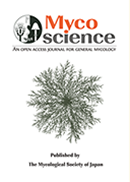Volume 60, Issue 6
Displaying 1-8 of 8 articles from this issue
- |<
- <
- 1
- >
- >|
Short communication
-
2019 Volume 60 Issue 6 Pages 313-318
Published: 2019
Released on J-STAGE: March 07, 2023
Download PDF (1360K) -
2019 Volume 60 Issue 6 Pages 319-322
Published: 2019
Released on J-STAGE: March 07, 2023
Download PDF (404K) -
2019 Volume 60 Issue 6 Pages 323-330
Published: 2019
Released on J-STAGE: March 07, 2023
Download PDF (4224K)
Full paper
-
2019 Volume 60 Issue 6 Pages 331-342
Published: 2019
Released on J-STAGE: March 07, 2023
Download PDF (3330K) -
2019 Volume 60 Issue 6 Pages 343-350
Published: 2019
Released on J-STAGE: March 07, 2023
Download PDF (1514K)
Note
-
2019 Volume 60 Issue 6 Pages 351-353
Published: 2019
Released on J-STAGE: March 07, 2023
Download PDF (713K)
Full paper
-
2019 Volume 60 Issue 6 Pages 354-360
Published: 2019
Released on J-STAGE: March 07, 2023
Download PDF (2808K)
Short communication
-
2019 Volume 60 Issue 6 Pages 361-365
Published: 2019
Released on J-STAGE: March 07, 2023
Download PDF (1365K)
- |<
- <
- 1
- >
- >|
